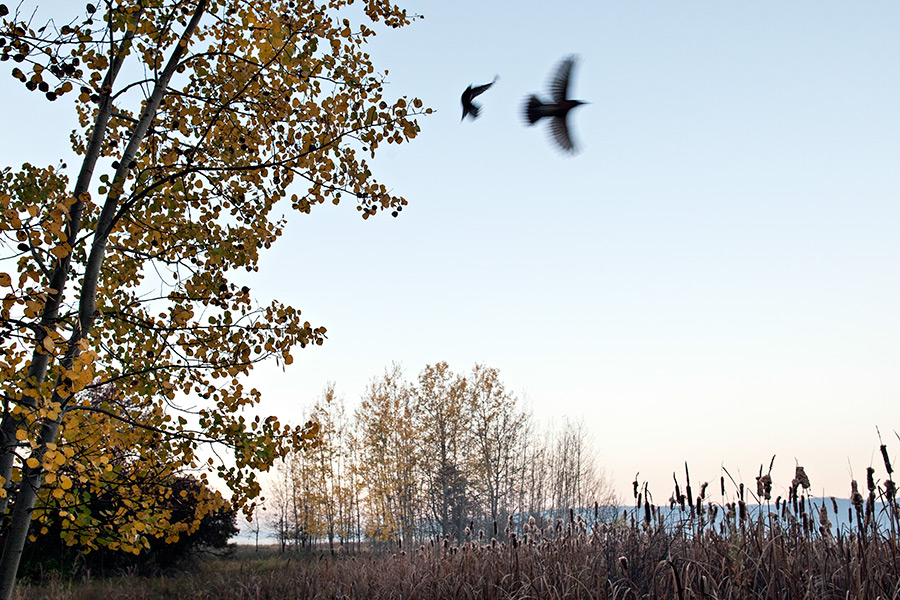In the 1800s, “side hunts” were a popular Christmas tradition. Hunters would gather on Christmas day and split into two groups. Each group would be assigned a piece of land and then they would head into the forest on a “cheerful mission of killing practically everything in fur and feathers that crossed their paths.” At the end of the hunt, whichever side had the biggest pile of corpses won the day.
Ornithologist Frank M. Chapman, an early member of the Audubon Society, thought the bloody tradition was rather wasteful, so he suggested something new in 1900. Instead of killing animals, what if people just peacefully watched them from a distance? In a 1900 issue of Bird Lore, the Audubon Society’s membership publication, he suggested just that.
“Bird Lore proposes a new kind of Christmas side hunt, in the form of a Christmas bird-census,” Chapman wrote. “We hope that all of our readers who have the opportunity will aid us in making it a success by spending a portion of Christmas Day with the birds and sending a report of their ‘hunt’ to Bird Lore before they retire that night.”
One hundred and twenty years later, the Audubon’s annual Christmas bird count survives as the longest running citizen-science project on Earth. Every year, bird fans the globe over head out into the cold for the annual count, including right here in Northwest Montana, where the Flathead Audubon Society is preparing for counts in Kalispell, Bigfork and West Glacier.
“It’s a really fun winter tradition,” said Peter Fisher, an amateur ornithologist from Kalispell who helps organize the local count. “It’s a great opportunity to get outside.”
The Kalispell count has been ongoing for 21 years and usually starts at a local restaurant for breakfast, Fisher said. At breakfast, Fisher will split participants into teams of two or three people and assign an area to spot. Every count has a specific center point — for the Kalispell hunt it’s the intersection of U.S. Highway 93 and West Reserve Drive — and any flying bird within 15 miles of that point is recorded. Once they have their assignments, participants will drive out to their area and begin searching for birds by starting at one end and traveling to another. Every time they see a bird, they mark it off a list Fisher provides them with every bird that has ever been spotted on the Kalispell count. If a new breed of bird is spotted, there’s space for watchers to write it in.
Over the years, bird watchers have spotted 120 different species during the Kalispell count. Most years, participants will spot 60 or 70 different types of birds. Fisher encourages participants to take photos of the birds so that if it’s a rare one they can confirm that it actually was counted. Detailed descriptions of the birds help, too. Last year, someone spotted a greater white-fronted goose for the first time during the Kalispell hunt.
“The most exciting part is that there’s always the possibility of seeing something rare,” Fisher said.
After the count, everyone comes back together to review what they saw. Afterwards, Fisher compiles all the data and sends it off to the Audubon.
Bird counts happen around the world from Dec. 14 until Jan. 5, 2020. This year, counts are being held in Bigfork, Libby and Eureka on Dec. 14, West Glacier on Dec. 15 and Kalispell on Dec. 29. For more information, visit FlatheadAudubon.org.
